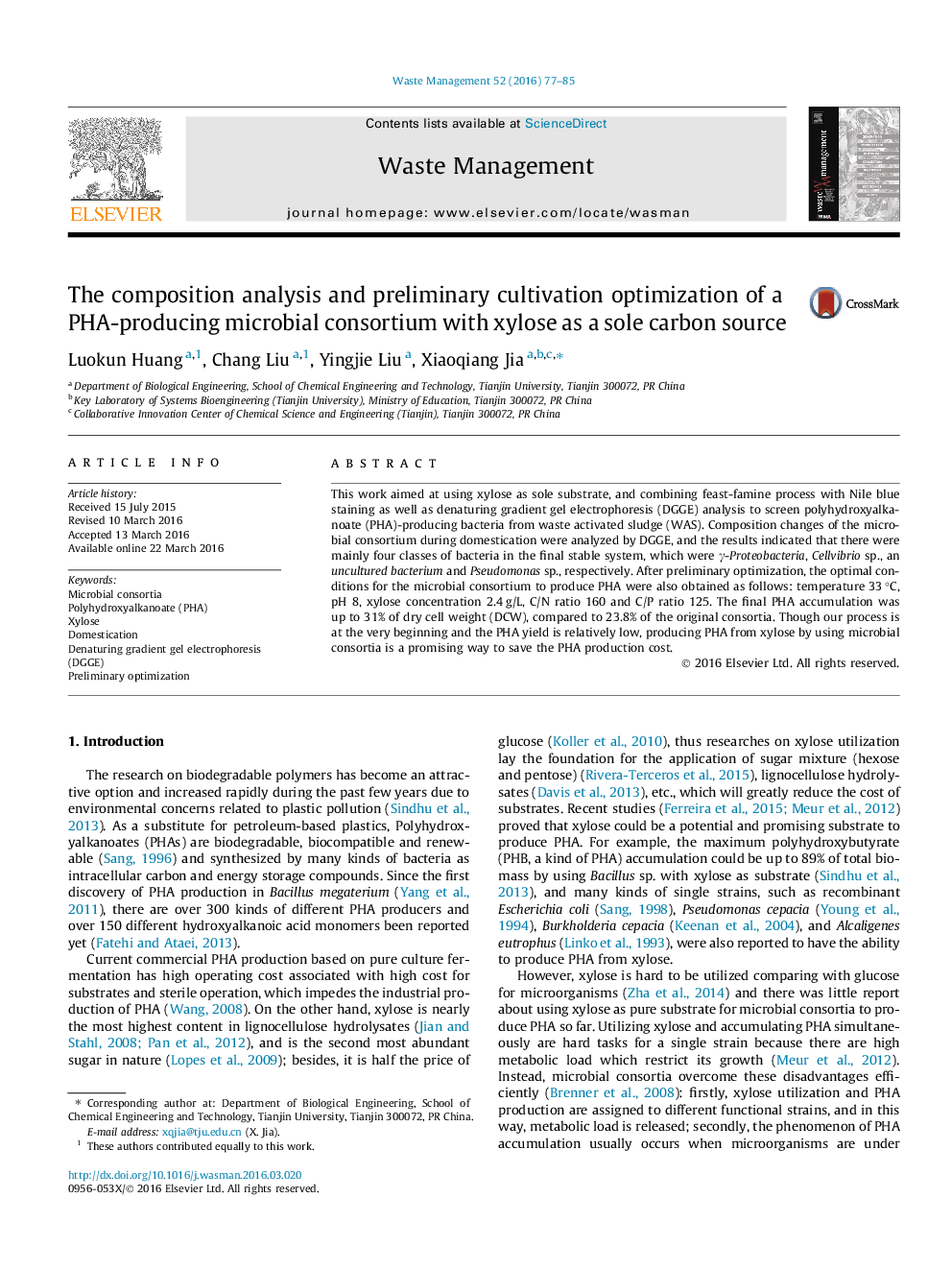| Article ID | Journal | Published Year | Pages | File Type |
|---|---|---|---|---|
| 4471229 | Waste Management | 2016 | 9 Pages |
•A domestication method was set up to screen PHA-producing bacteria from WAS.•A PHA-producing microbial consortium was obtained with xylose as the substrate.•The maximum PHA accumulation was up to 31% in flasks.•Producing PHA from xylose is a promising way to save the substrate cost.
This work aimed at using xylose as sole substrate, and combining feast-famine process with Nile blue staining as well as denaturing gradient gel electrophoresis (DGGE) analysis to screen polyhydroxyalkanoate (PHA)-producing bacteria from waste activated sludge (WAS). Composition changes of the microbial consortium during domestication were analyzed by DGGE, and the results indicated that there were mainly four classes of bacteria in the final stable system, which were γ-Proteobacteria, Cellvibrio sp., an uncultured bacterium and Pseudomonas sp., respectively. After preliminary optimization, the optimal conditions for the microbial consortium to produce PHA were also obtained as follows: temperature 33 °C, pH 8, xylose concentration 2.4 g/L, C/N ratio 160 and C/P ratio 125. The final PHA accumulation was up to 31% of dry cell weight (DCW), compared to 23.8% of the original consortia. Though our process is at the very beginning and the PHA yield is relatively low, producing PHA from xylose by using microbial consortia is a promising way to save the PHA production cost.
